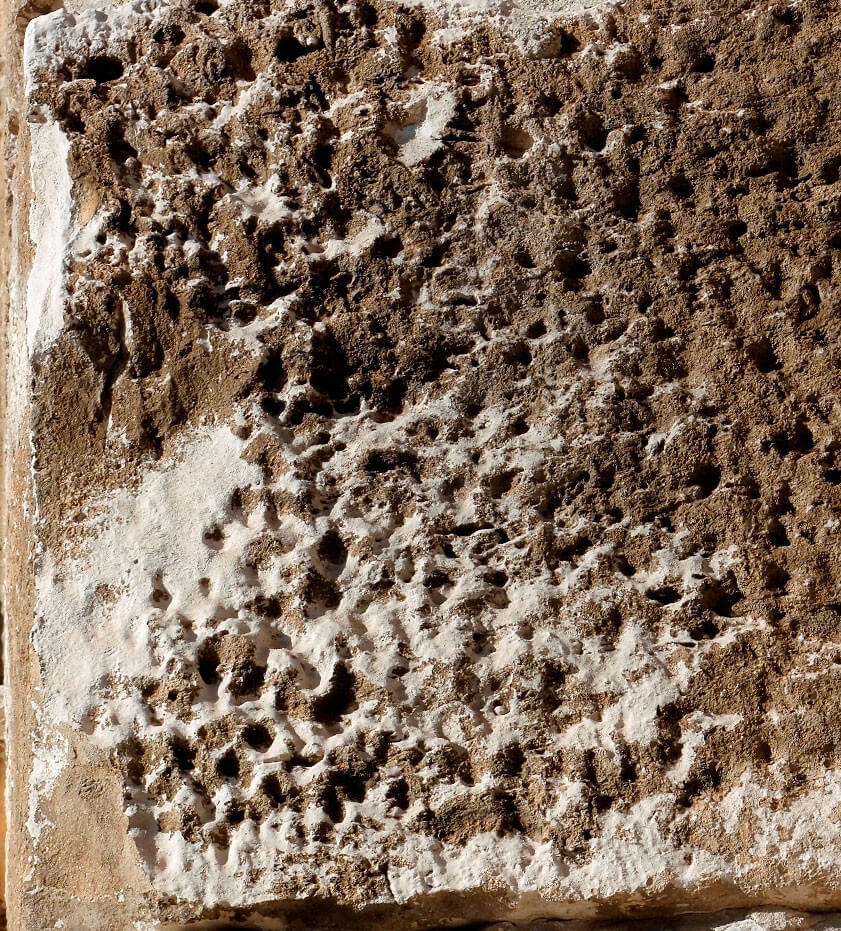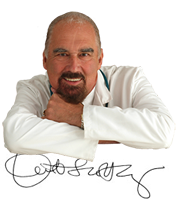In 1980 I was one of the world’s handful of top “clinical ecologists”, as we called ourselves.
In a way clinical ecology began as a movement in the 1950s, with fears about radiation pollution, particularly the health risks of strontium-90. This dangerous substance was a product of fall-out from atmospheric testing of nuclear weapons. It is picked up by grass and passes to cow’s milk and is then taken up into our bones in place of calcium, which it chemically resembles. The half-life of strontium-90 (the time taken for half the initial dose to fade and disappear) is about 30 years. During that time, and of course for many years afterwards, it continues to irradiate bone marrow, which is where leukemia strikes.
We began to worry about the health hazards of drinking honest old milk.
Next came fears of cancer-causing chemicals. Eventually people realized that manufacturers were lying about the safety of DDT, formaldehyde and agent orange. Gradually, individuals began to suspect advice and reassurances given by official government bodies. Naturally, those responsible for the pollution denied there was any real risk. It was clear that scientists were being corrupted by vested interests and this realization itself was something of a betrayal and shock to the populace at large.
Add to this acid rain and atmospheric pollution, which is powerful enough to strip down the fabric of brick and stone. Yes, there was understandable anxiety about what it was doing to buildings and works of art, and even concern about what was happening to the ecosystem, but not nearly enough interest in what it was doing to ourselves and other living things!

Acid rain erosion of buildings. But what does the atmosphere do to human tissues?
Perhaps the real question wasn’t ‘Why are more and more people becoming ill?’ but rather, ‘How is it that some of us are able to remain well, despite the steadily increasing pall of toxins to which we are subjecting ourselves?’ This at least would put the emphasis in the right place.
The way forward is really to study the body’s resources and learn how to strengthen them, before digging ever deeper into the complex detailed mechanisms of disease. We needed to study how to strengthen our immune systems, not let it be poisoned!
Not Really a Forward Revolution
At a time when the drug companies are attempting to tighten their grip, using government-backed legislation to protect their monopoly, people are following new directions and opting out altogether. Many are rightly concerned about toxic drugs; some are outright afraid and not without reason.
It is true, in my working lifetime, we have seen a medical revolution. But I can make that seem less of a cliché by pointing out that we are, in many senses, going backwards towards the Earth wisdom of our ancestors. Really, it is the ‘drug revolution’ that is coming to an end, at the same time that new discoveries in the realm of natural health phenomena make it very opportune that this should be so.
The truth is the drug boom is over. After just 50 years of hegemony, it has been exposed for what it is — a sham. The dream of universal health and magical cures for a vast array of ills, simply by popping a few pills, just hasn’t happened. Instead, patients have become increasingly frightened of drug treatment, with its frequent unpleasant side-effects and manifest dangers.
That isn’t to say that drugs have no place in medicine. They can and do save lives; penicillin is one of the greatest gifts Nature has given humanity, second only to fire as an aid to our survival. But those kinds of drugs are in a tiny minority. The vast bulk of substances pushed by the profit-hungry chemical cartels are useless or worse. Even conscientious and caring doctors seem oblivious to the irony that, by definition, chronic drug treatment doesn’t work. If it cured, there would be no need to go on taking it!
There is the apparency that the treatment is helping, when in fact it is doing no good whatsoever. By disguising the damage, the patient may be ill served.
THE SOIL AND SEED
One of the inevitable results of the overuse of drugs and their fundamental ineffectuality, is that the search for real causes is obscured.
Take a disease like tuberculosis. Antibiotics were discovered that can treat this condition and save lives, by killing the microbe that causes it (Mycobacterium tuberculosis). This put firmly into doctors’ mind that TB is ‘caused’ by a bacterium. We call this the “germ theory of disease” propounded by Louis Pasteur who became (quite rightly) famous as his ideas gained credence.
But it isn’t at all that simple. It’s true, nobody gets TB without the presence of M. tuberculosis. But these microbes abound everywhere, yet we do not all fall prey to their pathogenic potential. Why is this? Well, the reason probably varies from case to case but it is certain that there is some weakening factor at work in those who get TB. Isn’t this the real cause of the disease and the microbe just an opportunist?
TB is a good example because, although often cited as one of the greatest successes of modem medicine, it isn’t really. The actual reason for the drop in the incidence of TB isn’t science or drugs at all, but improved economic factors. Poverty as it once existed is now virtually unknown in the Western world. As a result, individuals are better nourished today than ever before and have more resistance to disease. The long-term figures for mortality in TB (see chart) show a declining trend that began as early as 1900, long before the era of modem drugs and vaccinations.

Respiratory tuberculosis notifications in England and Wales, 1912-1975
(Note the interruption of the downward trend due to the Second World War)
We call the issue of susceptibility, the ‘soil and seed’ theory. The germs are the seeds; but whether they grow successfully and flourish, to produce a disease, depends on the character of the soil — that is, the resistance of the patient.
Personalized Medicine
Which brings me to the idea of the individual in medicine, which is really what characterizes my approach to medicine over the years. In fact, it is one of the major differences in ‘philosophy’ between the new and the old. Dr Theron Randolph, one of the founding figures of the clinical ecology movement, coined the expressions exogenous and endogenous medicine, to describe the two opposite ends of the spectrum. According to this view, exogeny is disease caused from without, i.e., environmentally.
Endogeny is a failure from within. It’s the orthodox doctor’s view of things, which conceives of patients only as sick people, something decrepit and malfunctioning, rather like broken-down machinery.
Exogeny would see everyone as inherently healthy but for some exterior factor making them sick. So the cause of health problems is the challenge, not the body’s failure.
Modem medicine is endogenously orientated and its laboratory-based, reductionist, analytic, bodily-centred approach has come to dominate medicine almost entirely. Its techniques are expensive and its equipment is complex. Without the support of Big Business and profit-making organizations it probably couldn’t function at all.
The natural health alternative, on the other hand, is simplistic, deductive and environmentally-orientated. Patients can apply it for themselves and get well easily and inexpensively.
Today, we have what Ted Randolph called a diagnostico-therapeutic gap, which is characterized by a great indifference to the actual nature and causation of disease and, instead, an almost rigid obsession with how to treat its end-result (symptoms). The body and its counter-role in illness is heavily subordinated to the characteristics and properties of the supposed ‘pathogens’.
Good health and Right Thinking,

Prof. Keith Scott-Mumby
The post Newsletter This Week Is An Education appeared first on Dr. Keith Scott-Mumby.
